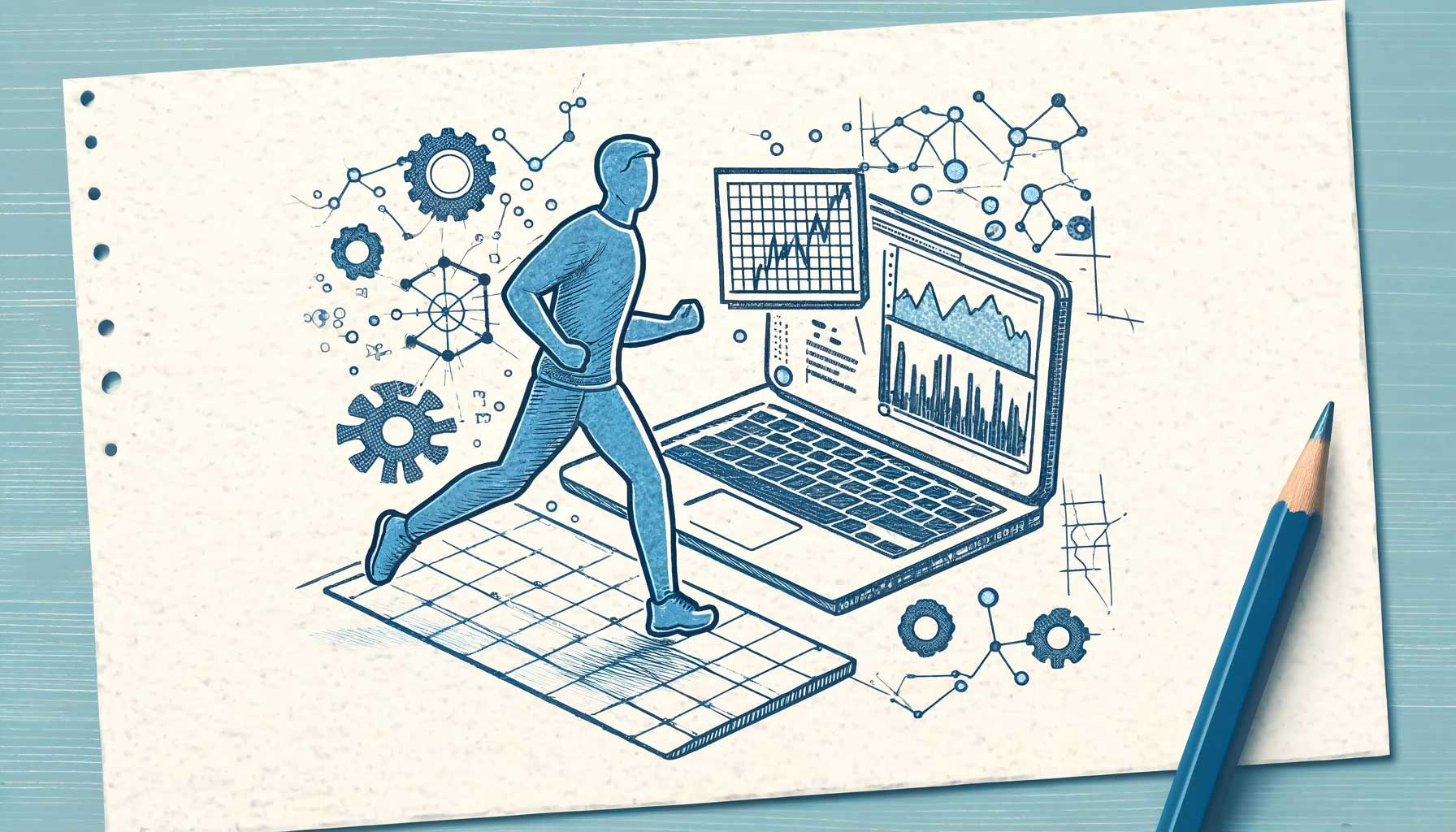1. Introduction
Welcome back to our mini-series on machine learning in health research! In this article, we explore supervised learning, a key method in machine learning, and its applications in physical activity studies using accelerometry.
Supervised learning is a type of machine learning where an algorithm is trained on a labeled dataset. This means the input data comes with corresponding output labels, which the algorithm uses to learn and make predictions. It’s like teaching a child with flashcards, where each card shows a problem on one side and the solution on the other.
Key Steps in Supervised Learning
- Data Collection: Gather datasets that include both input variables (features) and output labels.
- Data Preprocessing: Clean and prepare the data, addressing missing values and normalizing the dataset.
- Model Training: Use the labeled data to train the algorithm, allowing it to learn the relationship between inputs and outputs.
- Model Evaluation: Test the algorithm’s performance on new, unseen data to ensure it can generalize well.
2. Applications in Physical Activity Studies
Supervised learning is particularly useful for analyzing physical activity data from accelerometers, which measure motion through three-axial acceleration. Here are some key applications:
Classifying Physical Activities:
- Example: Using labeled accelerometer data to identify different types of physical activities, such as walking, running, and cycling. The algorithm learns the patterns associated with each activity and can predict the activity based on new data.
- Impact: Helps researchers and clinicians understand the types and intensity of physical activities individuals engage in, essential for designing personalized fitness and rehabilitation programs.
Predicting Health Outcomes:
- Example: Training models to forecast health outcomes like cardiovascular health or obesity risk based on physical activity levels. The algorithm uses historical data where physical activity levels and health outcomes are known to learn the relationship between them.
- Impact: Enables early intervention and personalized health recommendations, potentially improving long-term health outcomes.
“Supervised learning enables precise activity classification and health outcome predictions, making it a powerful tool in physical activity research.”
2.1. Benefits and Challenges
Benefits:
- High Accuracy: Supervised learning can achieve high accuracy when trained on a large, well-labeled dataset.
- Interpretability: The relationship between input features and outputs can often be understood and interpreted, providing valuable insights.
Challenges:
- Data Labeling: Requires a substantial amount of labeled data, which can be time-consuming and expensive to obtain.
- Overfitting: The model may perform exceptionally well on training data but fail to generalize to new data if overfitting occurs.
3. Conclusion
Supervised learning is a powerful method in physical activity research, enabling accurate classification of activities and prediction of health outcomes based on accelerometry data. By leveraging labeled datasets, researchers can uncover patterns and relationships that inform better health interventions and personalized care.
In the next article, we’ll explore unsupervised learning, another critical type of machine learning that works without labeled data. We’ll discuss its mechanisms and applications in physical activity research, including cluster analysis and anomaly detection.
References
- Goodfellow, I., Bengio, Y., & Courville, A. (2016). Deep Learning. MIT Press. Link
- Bishop, C. M. (2006). Pattern Recognition and Machine Learning. Springer. Link
- Trost, S. G., & O’Neil, M. (2014). Clinical use of objective measures of physical activity. British Journal of Sports Medicine, 48(3), 178-181. Link
You Might Also Be Interested






Frequently asked questions:
What is supervised learning in machine learning? +
Supervised learning is a type of machine learning where an algorithm is trained on a labeled dataset. Input data is paired with output labels, allowing the algorithm to learn and make predictions based on the relationship between the inputs and outputs.
How is supervised learning used in physical activity research? +
Supervised learning is used in physical activity research to classify different types of physical activities and predict health outcomes. Algorithms are trained on labeled accelerometer data to recognize activity patterns and forecast health risks based on physical activity levels.
What are the key steps in supervised learning? +
The key steps in supervised learning include data collection, data preprocessing, model training, and model evaluation. These steps involve gathering labeled data, cleaning and preparing it, training the algorithm, and testing its performance on new data.
What are the benefits of supervised learning in physical activity studies? +
The benefits of supervised learning in physical activity studies include high accuracy in activity classification and health outcome predictions, as well as the interpretability of the relationships between input features and outputs, providing valuable insights.
What are the challenges of using supervised learning? +
Challenges of using supervised learning include the need for a substantial amount of labeled data, which can be time-consuming and expensive to obtain, and the risk of overfitting, where the model performs well on training data but fails to generalize to new data.
What is the impact of supervised learning on physical activity research? +
Supervised learning significantly impacts physical activity research by enabling precise classification of physical activities and accurate prediction of health outcomes based on accelerometry data. This leads to better health interventions and personalized care.









